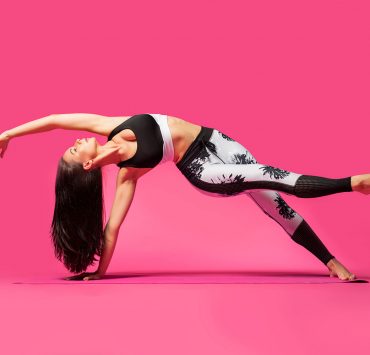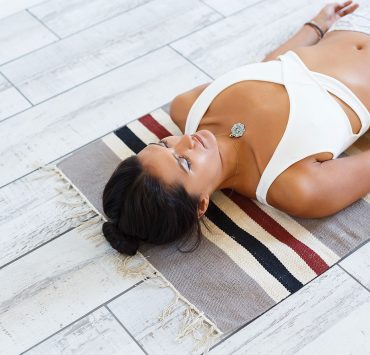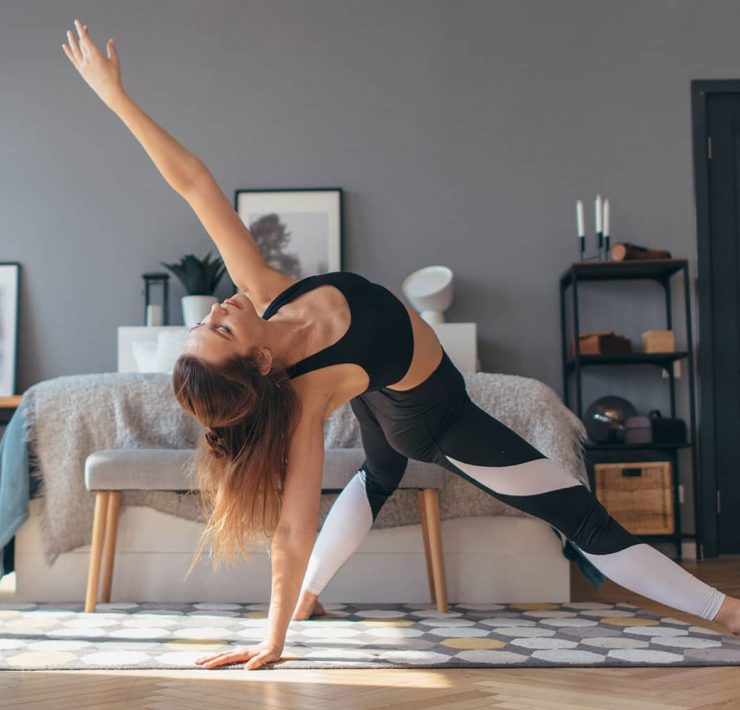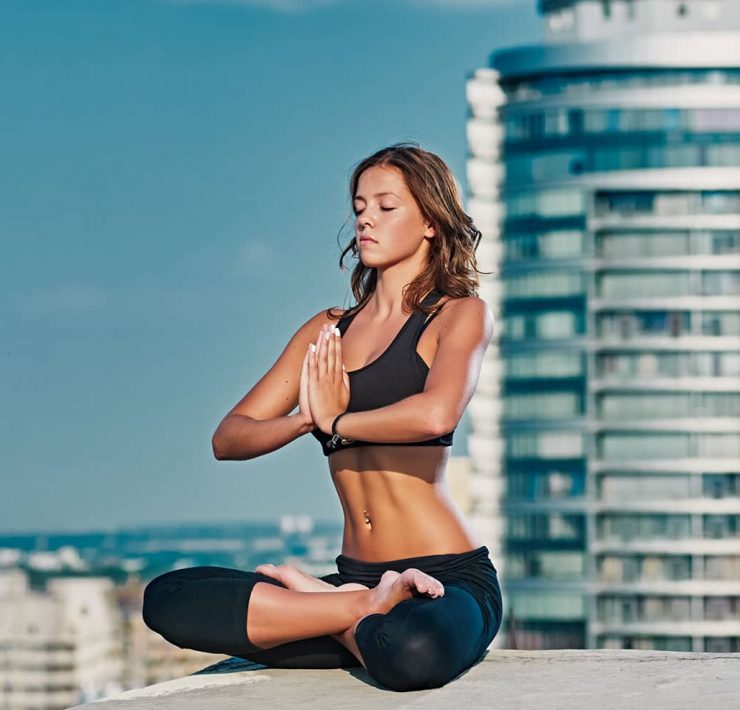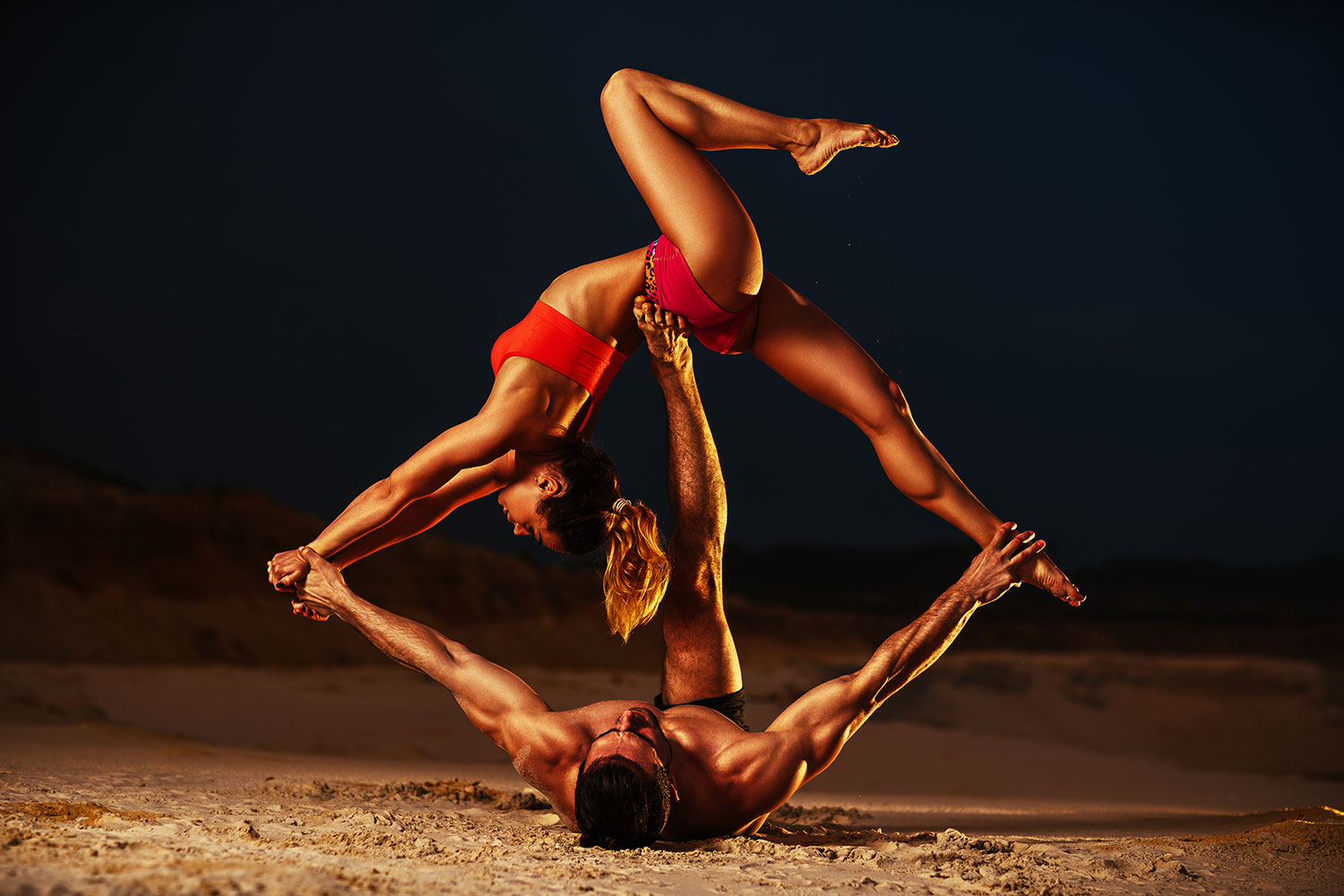
Yoga, meditation, and spirituality are at the top of the…
AcroYoga is a fun spin on the traditional yoga practice that merges Vinyasa or Hatha styles with acrobatics. This style emerged in the late 1990s, giving practitioners a way to connect with others, build trust, and explore their practice in a new and interesting way.
In AcroYoga, you will have a base, who is the person that supports the weight of their partner. The flyer, on the other hand, is the person who is (in most cases) lifted off the ground by the base. It is a good idea to have a spotter nearby as well who can help support the flyer and base as needed. This is an especially good idea if you are just trying the practice for the first time.
If you are interested in trying AcroYoga, these poses are the best beginner options to introduce you to the practice and familiarize yourself with the unique challenges that come with it. Grab a partner and spotter, try out some new poses, and remember to have fun with it!
Plank on Plank

Plank on Plank is a great introductory pose into AcroYoga. It helps familiarize you with working with a partner, and builds core and arm strength.
Instructions:
The base will move into Plank Pose, with their arms straight, core engaged, and shoulders stacked over their wrists. Their palms should press firmly into the ground, with their fingers spread out.
The flyer will then bring their hands to the base’s ankles or calves, grabbing hold of them. Then, one foot at a time, they will step one foot up onto one shoulder, and then the other on the opposite shoulder. The feet can hook around the base’s shoulder (or simply extend past the shoulders if the flyer is on the taller side), or the flyer can tuck their toes and balance on the base’s shoulder blades if possible.
Plank Press

Plank Press is another great introductory pose that helps the base get used to the sensation of supporting another person’s weight, while also establishing trust between the two partners. It is a precursor for Front Plank, which will be covered below.
Instructions:
The base will lie on their back, with their knees bent and feet on the ground. The flyer will stand at the base’s feet, facing the base.
The base will then lift their feet off the ground and press them into the flyer’s hips, keeping them about hips-width distance apart, while extending their arms straight up. The flyer will stand tall with their core engaged and arms out to create a T shape.
The base will then begin to bend their knees in towards their chest so that they are supporting the flyer’s weight as they are leaning forward. The flyer will keep their stance straight and firm as this is happening, with their feet remaining on the ground. Continue this pressing motion for a few reps to get familiar with the sensation of supporting another person’s weight.
Folded Leaf

Folded Leaf will give the flyer the opportunity to actually lift off the ground, helping to establish trust and familiarity with the sensation.
Instructions:
Move into the starting position of Plank Press, with the base’s feet pressing into the hips of the standing flyer, and their arms extending up. The flyer will then bend at their hips, and grab the base’s knees with their arms straight.
The flyer will then bend at the elbows to lower the torso even further, and the base will support the shoulders of the flyer. The base will then bend their knees to bring the flyer forward, so that their shoulders are stacked over each other’s.
From here, the base will turn their toes out, and begin to straighten their legs up, lifting the flyer off the ground. The flyer’s hands will still be on the base’s knees, and they will leave their legs heavy. The base should have a small bend in the knees in order to maintain stability and not lock the legs out.
Front Plank

Front Plank takes Plank Press further, so that the flyer can fully lift off the ground.
Instructions:
Start in Plank Press, with the base’s feet pressing into the flyer’s hips. The flyer will reach forward and grab hold of the base’s hands. Both partners’ arms should be straight.
The base will bend their knees into their chest as the flyer presses into the ground, preparing to take off. The base will then extend their legs straight up as the flyer lifts off, keeping their feet over their hips. The partners should still be holding hands at this point for support. The flyer should keep their core engaged as they straighten their legs and point through their toes.
Partner Forward Folds

Partner Forward Folds provide a fun way for both partners to get a deep stretch in the back and the hamstrings.
Instructions:
The flyer and the base will stand back to back, with their feet spread a bit wider than hips-width distance apart. They will then hook elbows, with the base’s elbows underneath.
The base will then begin to lean forward, keeping their back straight. The flyer will naturally go back with them, lifting off the ground. The base should keep their torso at hip level. The flyer can bend their knees into their chest, or straighten them up towards the sky or in a wide straddle stretch.
Fish on a Rock

Fish on a Rock is a more restorative AcroYoga pose. It is great for opening the hips and the back of both the flyer and the base.
Instructions:
The base will move into Child’s Pose, with their hands extended out in front of them and their knees out wide as they rest their forehead on the ground. The flyer will then lie down on their back on top of the base, so that their back arches over the base’s back for a nice, deep stretch. The flyer can extend their legs and let their arms go out to the sides to completely surrender to the pose.
Down Dog L-Shape

Down Dog L-Shape Pose allows the flyer to give the base a nice lengthening through the spine as they are in Downward Facing Dog. For the flyer, the inversion helps them work on their handstand and strengthen their arms.
Instructions:
The base will move into Downward Facing Dog, pressing firmly into their hands as they reach their tailbone back. The flyer will stand in front of the base’s hands, facing away from them.
The flyer will then widen their stance so that their feet are on either side of the base’s hands, and then fold forward and place their hands a few inches in front of the base’s hands. The flyer’s hands should be directly under their shoulders.
From there, one foot at a time, the flyer will lift their feet up and place them onto the base’s low back, pressing in firmly through their toes. They should lengthen through the legs, so that they are making an upside-down L shape with their body.
Foot to Hand

Foot to Hand Pose is a great pose to play with balance and establish the feeling of supporting another person’s weight.
Instructions:
The base will begin on their back, and will extend their legs straight up so they make an L shape with their body. They will then bend their elbows so that their forearms are facing up, with their wrists stacked over their elbows.
The flyer will start standing near the base’s head, and will grab hold of the base’s feet for support. They will then step their right foot to their base’s right hand, and then do the same on the opposite side. The base will grab hold of the heels, keeping their elbows on the ground and their forearms straight.
From here, the flyer can find their balance, and carefully take their hands off of the base’s feet if they feel comfortable. The flyer can stand up straight, with their hands at their chest or on their hips.
Chair Pose on Shins

Chair Pose on Shins allows the base to build up leg strength, while the flyer works on their balance.
Instructions:
The base will start on their back, with their knees bent and stacked over their hips. Their legs should be hips-width distance apart, and they should extend their arms up.
The flyer will stand near the base’s feet, facing them. They will place the ball of their right big toe on the base’s right shin, and grab onto the base’s hands for support. They will then lift their left foot and place it on the base’s left shin.
From here, the flyer can stand up and release their hands from the base’s hands. After they find their balance, they can then bend back into Chair Pose, with their arms extending past their ears. The base can grab hold of the tops of the feet of the flyer.
Jedi Plank

Jedi Plank is a great pose to practice if both partners want to get a nice workout and engagement of the core.
Instructions:
The base will start on their back, with their legs straight and their arms at their sides. Their legs should be hips-width distance apart. The flyer will bend down towards the base’s feet and grab hold of their shins.
They will then lift one foot off the ground at a time, allowing the base to grab hold of the flyer’s ankles with their hands. Both the base’s and the flyer’s arms should be straight, and the flyer will be in what looks like a Plank Pose.
Simultaneously, the flyer will start to lift their hips to move into an upside down L shape, while the base lifts their torso off the ground and extends their arms above their head, still holding onto the flyer’s ankles. Together, the flyer and base will create a box shape.
If you feel called to experiment with your yoga practice, grab a partner and test out some of these beginner AcroYoga poses. They add a fun challenge for both the base and the flyer, and can help you play with a new side of yoga that you may have never experienced before!
What's Your Reaction?
Yoga, meditation, and spirituality are at the top of the list for writer and former nutritionist Amanda Carter. This devoted practitioner enjoys writing about health and wellness just as much as she enjoys living it.






